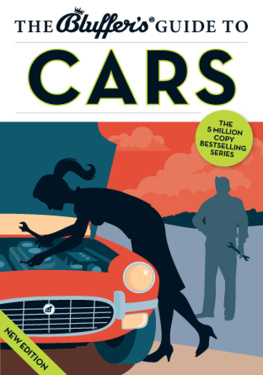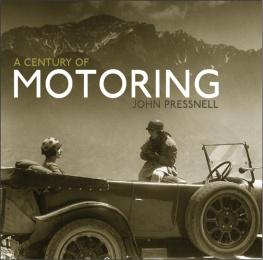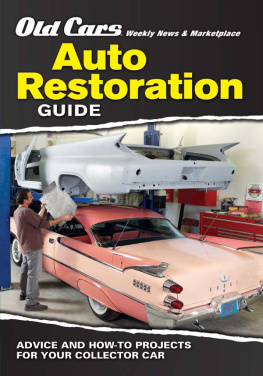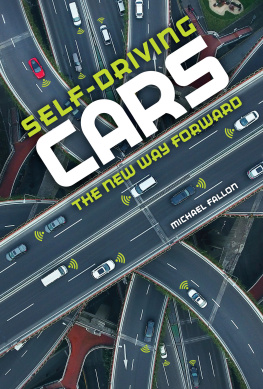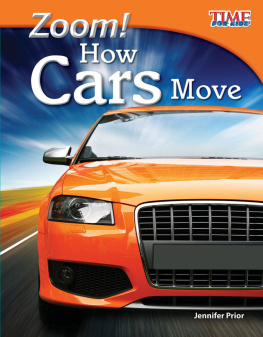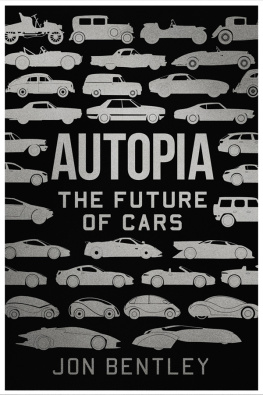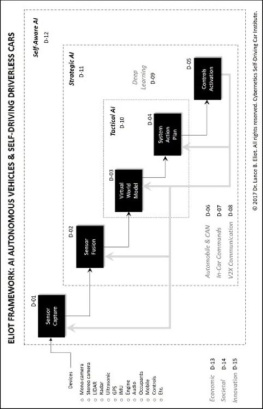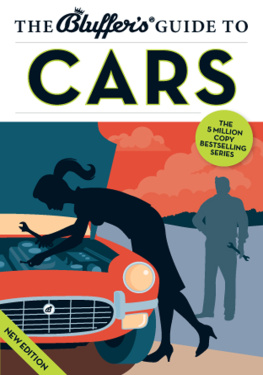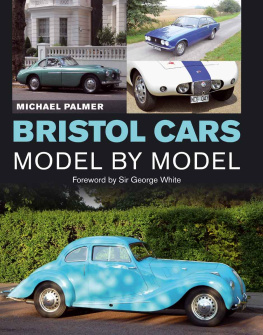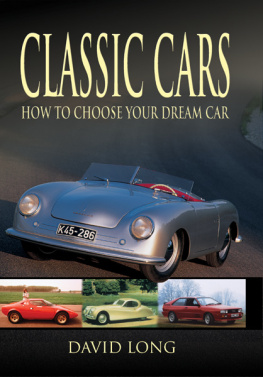

Hammersley House
5-8 Warwick Street
London W1B 5LX
United Kingdom
Email:
Website: bluffers.com
Twitter:
First published 2013
This edition published 2013
Copyright Bluffers 2013
Publisher: Thomas Drewry
Publishing Director: Brooke McDonald
Series Editor: David Allsop
Design and Illustration: Jim Shannon
With thanks to Giles Chapman
All rights reserved. No part of this publication may be reproduced, stored in a retrieval system or transmitted in any form or by any means, electronic, mechanical, photocopying, recording or otherwise, without the prior permission of Bluffers.
A CIP Catalogue record for this book is available from the British Library.
Bluffers Guide, Bluffers and Bluff Your Way are registered trademarks.
| ISBN: | 978-1-909365-80-3 (print)
978-1-909365-81-0 (ePub)
978-1-909365-82-7 |

For some, cars are giant, shiny badges of machismo or material success. For others, they have become an everyday adjunct to life, as necessary as dental work but slightly more fun.

START ENGINES
W hether you regard them as expressions of your libido or extensions of your overdraft, cars are hard to ignore.
Theyre the subject of politics, lust, envy, aspiration and necessity. Theyre symbols of liberation and progress that stop you getting where you want to go as their numbers have multiplied like super-viruses and clogged up the roads.
Cars are the result of genius, megalomania, vanity and insanity, and have the capacity to both fascinate and bore. Visit one of Britains few remaining pubs and in the corner of the bar will be a man with a brown nylon tie and his own tankard who knows everything about the Triumph Herald. Go to the car park of your local supermarket after its shut and youll find spotty boys in hoodies and saggy-arsed jeans who wish Jeremy Clarkson was their dad. Theyll have memorised the top speed of every Lamborghini built since 1998, but have to content themselves with wheel-spinning a 12-year-old, wheezing, 1000cc Vauxhall Corsa until one of its drive shafts snap or they collect a shopping trolley as a bonnet mascot. Or both.
Car bluffing starts early, and the high cost of motoring is hardly a disincentive to drive. If youre under 25, then your first car will cost many times more than the cars worth to insure for a year, sadly not because miserable, middle-aged insurers are jealous of your youth and vitality but because they reckon (with some justification) that youre an adrenalin-addled nutter who will wrap it round a Bentley at the first opportunity.
But this wont put you off car ownership. Quite the contrary. It will make the prospect of getting behind the wheel of your own car even more alluring. And you will remember that seminal moment for the rest of your life. Indeed, you can still recall those looks of admiring envy from other car owners when you first screeched to a halt onto that garage forecourt, narrowly missing the tiers of wilting flowers and charcoal briquettes, as you casually stepped out of your wheezing, smoke-belching runabout and struck a noble pose of devil-may-care insouciance.
With the myopia of youth, you will have failed to notice that your audiences lips were collectively mouthing the word tosser, but no matter. You were finally there, you had joined the brother/sisterhood of car owners, and the road of freedom stretched out ahead of you with all its shimmering promise of limitless adventure.
For some, cars are giant, shiny badges of machismo or material success. For others, they have become an everyday adjunct to life, as necessary as dental work but slightly more fun.
Then there are car enthusiasts, for whom anything with a wheel at each corner is utterly fascinating. They can tell you the split-second speed with which a Porsche sequential transmission changes gear, or the flammability of the fibreglass used to make a Reliant Robin and how long it will take to burn one to the ground.
These people can be found at racetracks, bars, used-car lots, playgrounds and online, discussing head-spinning motoring minutiae that excludes those who arent in the know. And that is where this short but definitive guide comes in. It sets out to conduct you through the main danger zones encountered in discussions about cars, and to equip you with a vocabulary and evasive technique that will minimise the risk of being rumbled as a bluffer. It will give you a few easy-to-learn hints and methods designed to ensure that you will be accepted as a car aficionado of rare ability and experience. But it will do more. It will provide you with the tools to impress legions of marvelling listeners with your knowledge and insight without anyone discovering that, before reading it, you didnt know the difference between a gudgeon pin and a big end, or Infinitely Variable Transmission (IVT) and a little known TV programme called Top Gear.

The first speeding ticket was issued to one Walter Arnold for driving at 8mph in a 2mph zone. If that law still stood today, you could get nicked for jogging.

THE WHEELS OF TIME
Y ou cant profess to be an expert on cars unless you have some grasp of their history. So sit down, relax and slip into neutral. Heres a short timeline of the evolution of the motor car.
1885 THE BIRTH OF THE PETROL-POWERED AUTOMOBILE
The first really recognisable petrol car was revealed in 1885 by a German engineer called Karl Benz. With his walrus moustache and prominent ears, Benz looked as if hed stepped from a cartoon in an early issue of Punch magazine. His car was a tricycle with solid tyres, one wheel at the front and a thumping engine under the seat. It looked like the progeny of a pram and a pony and trap, but without the pony.
Benz was one of a number of engineers working on horseless carriages, but his design was the first one that really worked properly.
To prove that theres never anything new, a Frenchman, tienne Lenoir, had already made the Hippomobile, a giant, hydrogen gas-powered three-wheeler way back in 1860. It looked a bit like a cattle-feeding trough on wheels but was a very early precursor to the fuel-cell cars that todays carmakers are spending billions trying to perfect to replace diesel- and petrol-engined vehicles, since the only thing they emit is water vapour. The Hippomobile wasnt ideal transport for people in a hurry, taking almost three hours to cover 11 miles although that would be considered a good rate of progress in London today.
Another French inventor, Gustave Trouv, had come up with a three-wheeled electric tricycle in 1881, having already thought up ideas for telephones, microphones and what was probably the first outboard motor for a boat (most of which, with the possible exception of the outboard, remained unfulfilled).
So why did the world end up with petrol rather than gas or electric cars? Well, the technology developed more quickly for internal combustion power and got progressively better. The infrastructure for fixing and fuelling these cars was established, but, to start with, finding fuel really limited the usability of early cars though chemists did often sell it, alongside prophylactics and hair cream (Going somewhere nice for the weekend, sir?). In addition, early automobiles didnt need to carry hefty batteries filled with acid, could be refuelled quickly and didnt require hours of charging a problem that true electric cars still have today.
Next page
